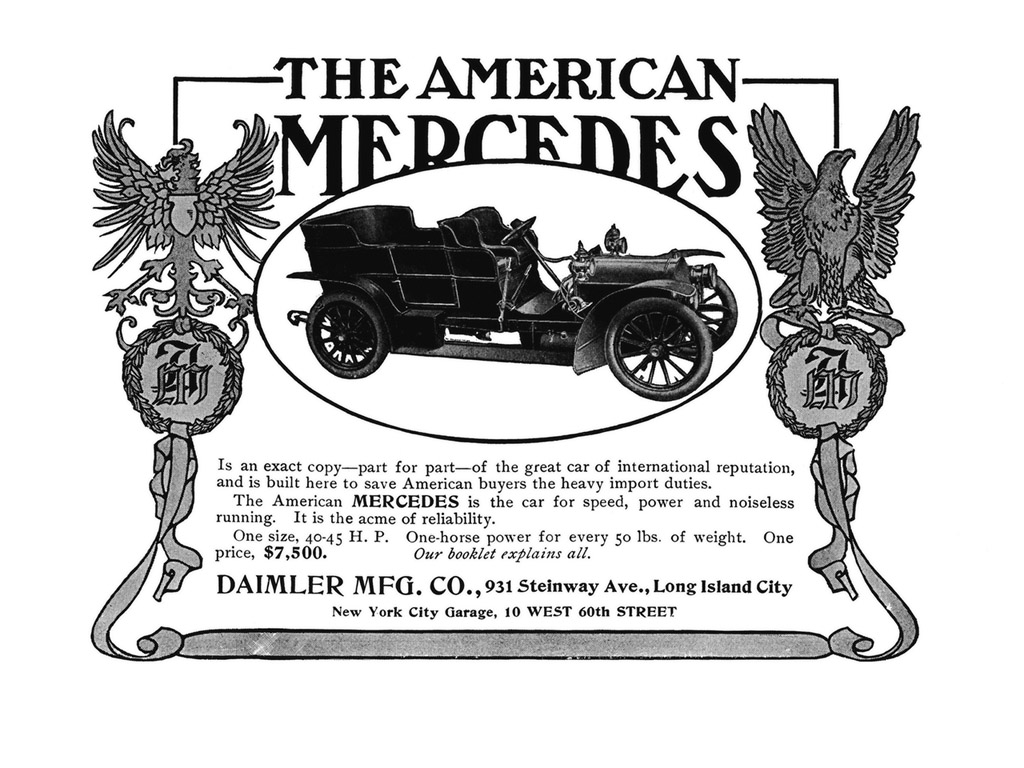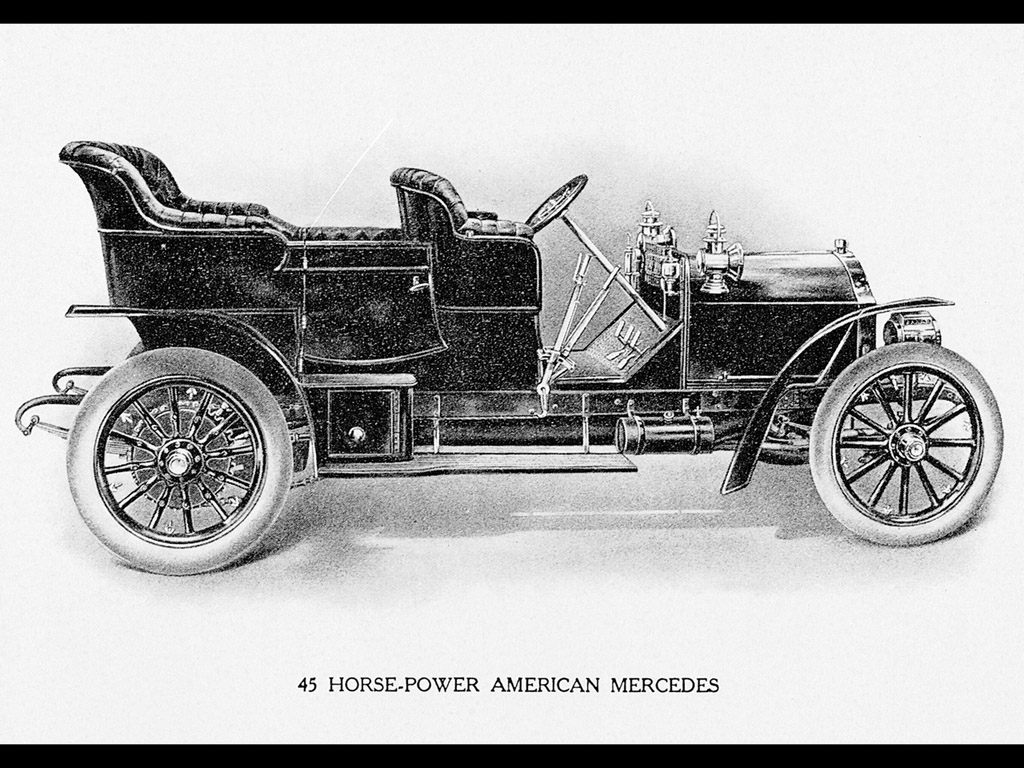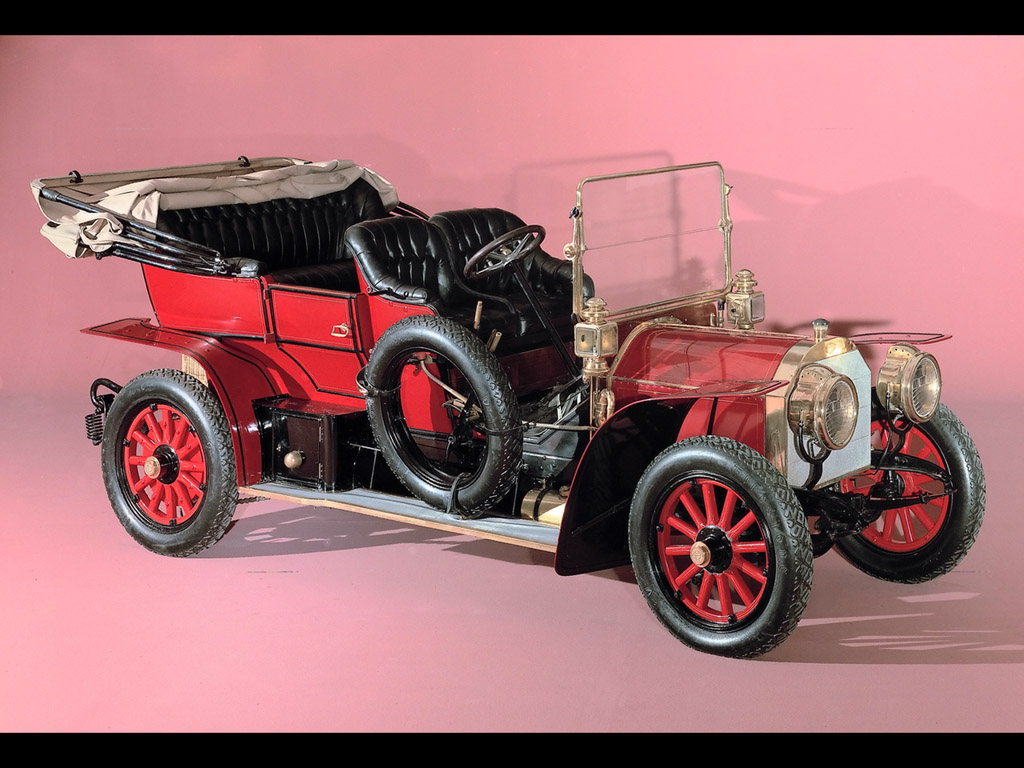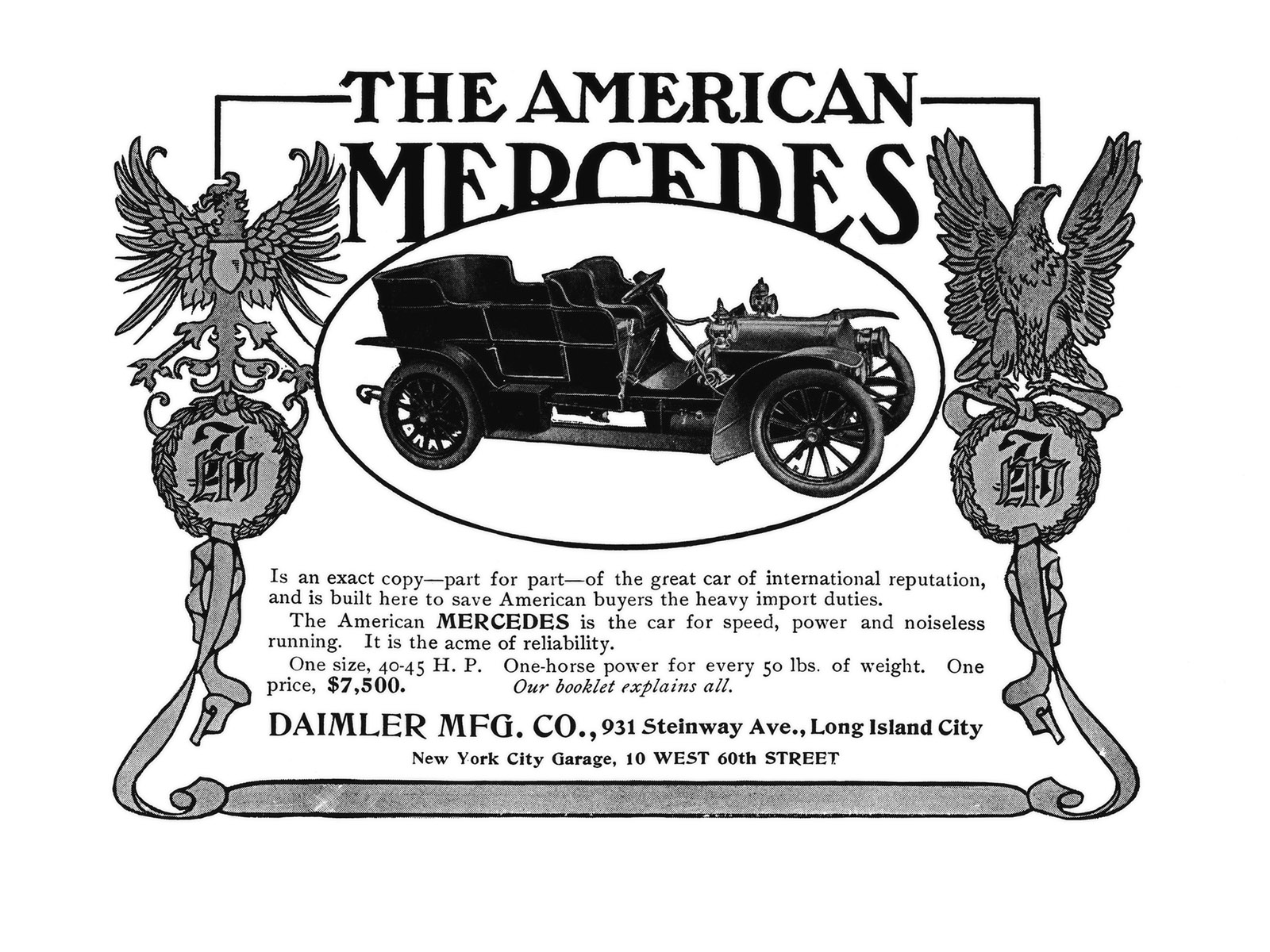American Mercedes 45 hp
(from
DaimlerChrysler Press Release) This
was far from being the case 100 years ago: At that time,
motorization was still very much in its infancy. Europe was ahead by
quite some distance and led the way in terms of technology. Thus
it’s no surprise that old-world automobiles were highly coveted in
America but were expensive due to shipping costs and customs duties.
The answer provided by Daimler-Motoren-Gesellschaft was a car
produced in New York, the “American Mercedes”, which was basically a
reproduction of the 45 hp Mercedes. It first appeared at the
National Automobile Show in New York in January 1905. The first
vehicle was delivered in 1906, at a price of 7,500 dollars. What
reads so easily in retrospect has a long history behind it.
Gottlieb Daimler was a man of vision. Not only was he driven by his
idea of motorization “on land, on sea and in the air” with his
invention of the internal combustion engine. He also knew that it
stood a chance in all countries of the world and was looking far
beyond the borders of the German Reich from very early on. The focus
was on the USA. As early as 1876, the exceptionally gifted designer
and Daimler confidant Wilhelm Maybach had got to know William
Steinway whose New York-based company produced keyboard instruments
in the tradition of his German ancestors. During a stay in Germany
in 1888, Steinway also made the acquaintance of Gottlieb Daimler.
Their conversations would always revolve around one thing: licensed
production of Daimler engines in America. After Steinway’s return to
America, the plans quickly materialized. On September 29, 1888,
Daimler Motor Co. headquartered in Long Island, New York, was
founded. Production on behalf of Daimler Motor Company was taken
over by National Machine Company in Hartford, Connecticut, in 1891,
and it was this company which engaged in license production of
America’s first operational vehicle engine based on Gottlieb
Daimler’s original design drawings. The company also manufactured
gas and petroleum engines for stationary and marine applications.
These early years were not easy but from 1895, orders began to
arrive in ever-increasing numbers. The two entrepreneurs started
considering production of automobiles in America at an early stage.
Daimler was, after all, keen on developing new markets for his
vehicles, and Steinway believed a bright future lay ahead for the
automobile.
In a newspaper interview in 1895, William Steinway outlined his
ideas of motorizing America:
“The cars which we intend to produce for the American market will be capable of carrying between two and four people and will be driven by engines with between 2.5 and 3.5 hp. Each car will have four different speed ranges: 3.5, 6, 9 and 14 miles per hour. The fuel – petroleum – costs about one cent per hp and hour, making the automobile considerably less expensive than horse power. … We already had a horseless vehicle here in 1893 but it was too lightly built for the rough cobblestone streets we have in this country. We will therefore create a model that will be adapted to conditions in America.”
This sounded like a very
concrete plan being in existence and indeed, car production was
started in a factory of Daimler Motor Company on Long Island in
1895. But Steinway died in November 1896. His heirs were not as
convinced as he was that they could make money by selling motor
vehicles. They sold off their shares in Daimler Motor Co. to General
Electric Company; from 1898 and after a restructuring, the
production facility was called Daimler Manufacturing Company.
Gottlieb Daimler died on March 6, 1900. Daimler-Motoren-Gesellschaft
stood proudly in his tradition – the company was still very keen on
manufacture in America. And finally, the Mercedes brand, created in
1900, was able to establish itself in the American market with its
ultra-modern and reliable designs. However, high shipping costs and
customs duties of 45 percent were an obstacle for imports on a
substantial scale – it was clear that local production would give
the vehicles a more competitive edge. And finally, in early January
1905, the “American Mercedes”, manufactured by Daimler Manufacturing
Company, was presented at the National Automobile Show in New York.
It had been derived from the 45 hp Mercedes and had a four-cylinder
engine with a displacement of 6.8 liters, a four-speed transmission
and a top speed of around 80 km/h. An early American advertising had
this to say: “If you want the best, of course you want a foreign
car. If you import, of course you import the Mercedes – the finest
car in the world. The American Mercedes is an exact duplicate of the
1905 Mercedes of 40-45 H.P. No detail is omitted.”
In the same month of the car’s launch, on January 25, 1905 and thus
exactly 100 years ago, American H. L. Bowden established a world
record over one mile with a flying start. Driving a Mercedes with
two 60 hp engines in Daytona Beach, Florida/USA, he reached an
average speed of 176.5 km/h. This signaled the breakthrough for the
brand. American customers’ attention had finally been drawn to cars
from Germany, and the more favorably priced local reproductions were
very much welcomed. In 1906, at last, the first American Mercedes
was handed over to its buyer. Strangely enough, the standard color
was red. A newspaper advertisement aroused the buyers’ interest:
“The American Mercedes is the car for speed, power and noiseless
running. It is the acme of reliability.” These values are to this
day embodied by every Mercedes-Benz the world over.
The total number of cars produced is unknown. In mid-February 1907,
fire ravaged the plant, destroying eight completed cars and 40 in
the process of construction. Production was never resumed.



